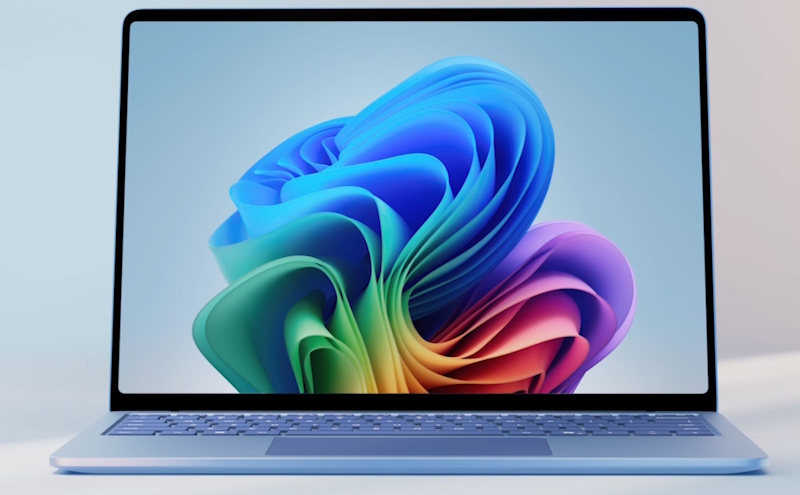Microsoft’s Surface Laptop 7 represents a major leap in the Surface lineup, introducing an all-new design, improved performance, and deep AI integration. Released in mid-2024, this latest addition to the Surface family is the first in the series to feature ARM architecture, signaling Microsoft’s shift toward a new era of computing. This move positions the company alongside competitors like Apple, proving that Windows on ARM is ready to compete with macOS on M-series chips.

Advancements Over Its Predecessor
The Surface Laptop 7 builds on the legacy of the Surface Laptop 5, delivering a significant boost in power, efficiency, and user experience. Unlike its predecessor, which relied solely on Intel processors, the latest model offers both Intel Core Ultra and Qualcomm Snapdragon X processors. More importantly, Microsoft is putting a strong emphasis on ARM, showing confidence in its potential for future Windows devices.
Embracing ARM Architecture

For the first time in the Surface Laptop series, Microsoft has integrated Qualcomm’s Snapdragon X Plus and X Elite processors. This shift to ARM architecture brings improved power efficiency, allowing the device to run longer on a single charge while maintaining excellent performance. The move is a clear statement from Microsoft that ARM is a key part of its future computing strategy, enabling competition with Apple’s M-series chips.
AI-Powered Productivity & Extended Battery Life
One of the biggest highlights of the Surface Laptop 7 is its AI capabilities. The device features built-in AI tools such as Cocreator for creative tasks and Copilot for enhancing productivity. These AI-driven enhancements streamline workflows and provide a more intuitive user experience.
Battery performance has also seen a major boost. Thanks to the efficiency of ARM architecture, the 15-inch model can last up to 17 hours on a single charge—one of the best battery performances in its class. This makes it a reliable companion for work, travel, and everyday use.
Modern Design & Features
Microsoft has introduced a refined design with thinner display bezels, rounded display corners, and a larger haptic touchpad for smoother interactions. The Surface Laptop 7 comes in two sizes—13.8-inch and 15-inch—offering users more choices based on their needs. The color options include Platinum, Blue, Black, and Dune, adding a touch of personalization.
Specifications of Microsoft Surface Laptop 7
| Feature | Details |
|---|---|
| Processor | Qualcomm Snapdragon X Plus / X Elite, or Intel Core Ultra |
| RAM Options | 16GB / 32GB LPDDR5X |
| Storage Options | 256GB / 512GB / 1TB SSD |
| Display | 13.8-inch or 15-inch PixelSense touchscreen |
| Battery Life | Up to 17 hours (ARM variant) |
| Ports | 1x USB-A, 2x USB-C, 3.5mm audio jack, Surface Connect |
| Connectivity | Wi-Fi 7, Bluetooth 5.4 |
| Operating System | Windows 11 (optimized for ARM) |
| Colors | Platinum, Blue, Black, Dune |
Copilot+ PC Variants
The Surface Laptop 7 is part of the new Copilot+ PC lineup, offering configurations suitable for a variety of users. Whether it’s for professionals needing high-performance capabilities or students looking for a reliable everyday laptop, there’s a variant to fit every need.
Challenges & Future Improvements
While the Surface Laptop 7 brings many exciting advancements, it does face some challenges, most notably application compatibility due to its ARM-based architecture. Some traditional Windows applications may not run natively and require emulation, which can affect performance. However, Microsoft and Qualcomm are actively working on expanding software support, and future updates are expected to improve compatibility.
Final Thoughts
The Microsoft Surface Laptop 7 is a bold statement from the tech giant, showcasing its commitment to ARM technology and AI-driven computing. With its sleek design, powerful AI features, and all-day battery life, it stands as a compelling option for users looking for the next-generation Windows experience. While some software compatibility concerns remain, Microsoft’s ongoing efforts suggest that Windows on ARM has a promising future.